
Our youngish readers might find it hard to believe that in the early 1960s the idea of a turbocharged production car was only slightly less fantastic than that of a pocket-size wireless flip phone. But in 1962, General Motors (Yes, there was a time when GM was a real innovator) rolled out not one but two such production passenger vehicles: the Corvair Monza Spyder, and the Oldsmobile Jetfire, America’s first turbocharged volume-production cars.
The Jetfire was essentially a 1962 F-85 Cutlass hardtop coupe (Holiday Coupe, in Olds-speak) with specific interior and exterior trim and, of course, a big surprise under the hood.
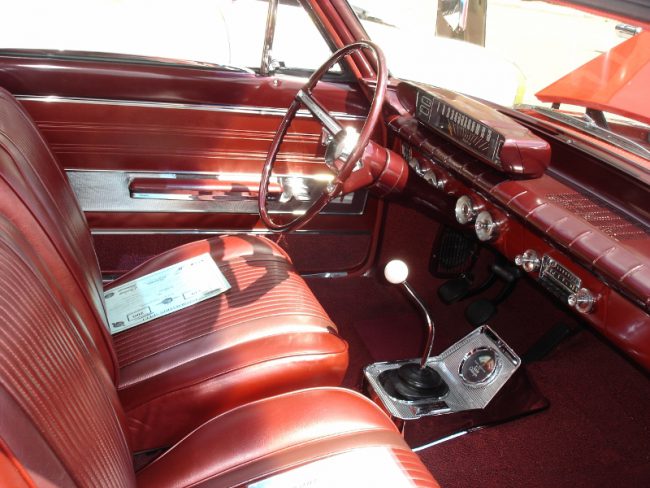
Oldsmobile partnered with the Garrett Corporation – then, a leading manufacturer of industrial turbochargers – and began working alongside engineers in Garrett’s newly-formed AiResearch department, a specialist division set up to develop turbochargers for the automotive industry. Together they developed a small diameter turbo and associated system exclusively for the Jetfire.

Weighing some 35 lbs., Jetfire’s bolt-on kit was based around a Garrett T05 turbocharger, which attached to the engine’s intake manifold as a carburettor normally would.
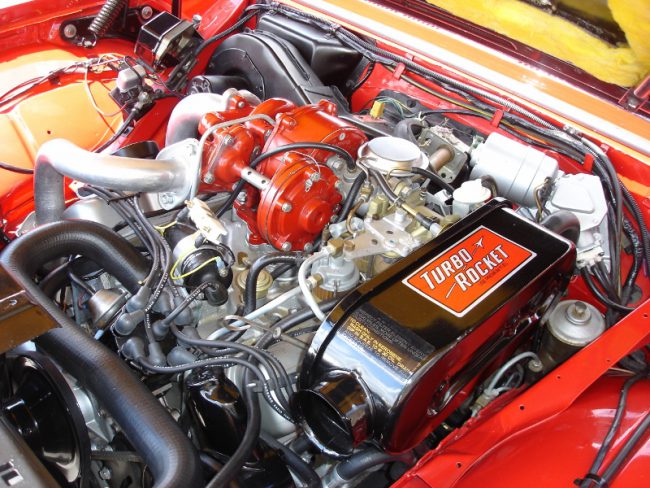
A specially developed, single-barrel Rochester sidedraft carb sat ahead of the turbo in a draw-through configuration. Oldsmobile then fitted its higher-compression (10.25:1) 215ci V8 with beefed-up pistons, connecting rods and main bearings, as well as specially modified distributor, coil, fuel pump, and radiator. The transmission was also reinforced.

Remember, these were the days before electronic knock sensors; to counteract detonation, Oldsmobile employed a novel fluid injection system using “Turbo Rocket Fluid” (Best. Accessory. Name. Ever.), a cocktail of distilled water, methanol, and rust inhibitor. When the turbo operated it pressurized the system’s tank, which caused Turbo-Rocket Fluid to squirt into the intake system between the carb and the turbocharger, thus cooling the intake charge through heat absorption.
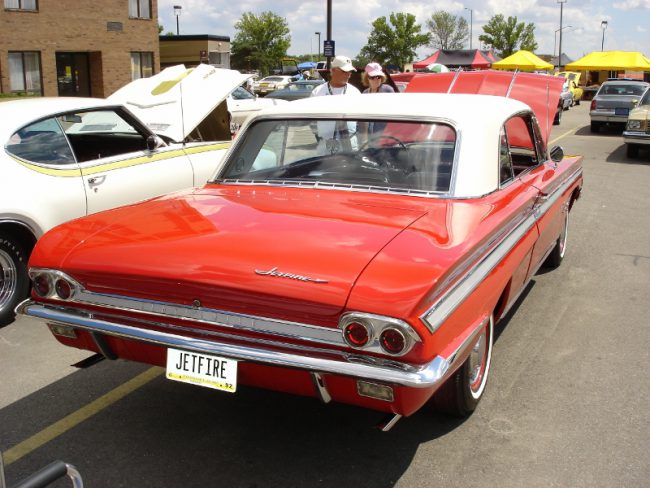
While the system did work, however crudely, the contents of the 5-quart (4.7 L) reservoir lasted about 225 miles in average driving. When it ran low, an ‘Add Fluid’ light illuminated on the car’s console-mounted boost gauge, whose needle swung between Economy and Power modes just like a fuel-economy vacuum gauge. When it ran out completely, a float-and-valve assembly in the system would shut to bypass the turbo and help preserve the engine. The setup also included redundant protection: The wastegate itself, for instance, had twin diaphragms. If those failed, the fluid-reservoir cap would pop off as a final measure to prevent an overboost situation.

The Jetfire’s Turbo Rocket V-8 was rated 215 horsepower–30 more than the naturally aspirated version and an impressive one horsepower per cubic inch–and developed a solid 300 lbs-ft. of torque at 3,200 RPM. Contemporary road tests revealed zero-to-60 times of approximately nine seconds, and a top speed of 110 MPH.
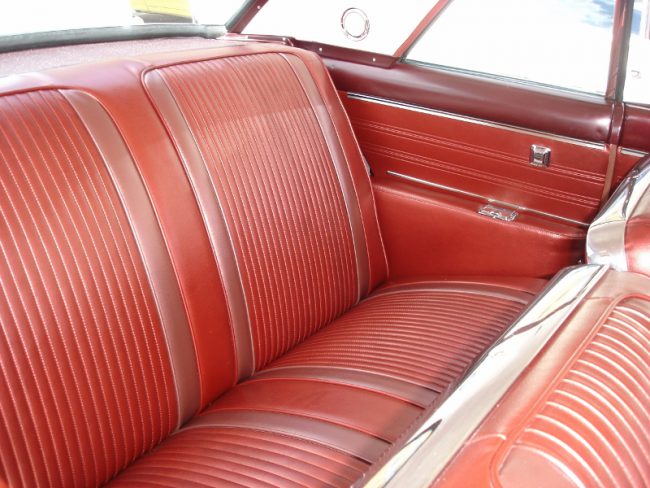
Oldsmobile sold 3,765 Jetfires in 1962 and 5,842 in 1963, but problems plagued the car. Ironically, a frequent owner complaint was “lack of power”. How could this be? Well, more than a few owners simply let the Turbo Rocket Fluid tank run dry, thus negating the turbo’s benefits.
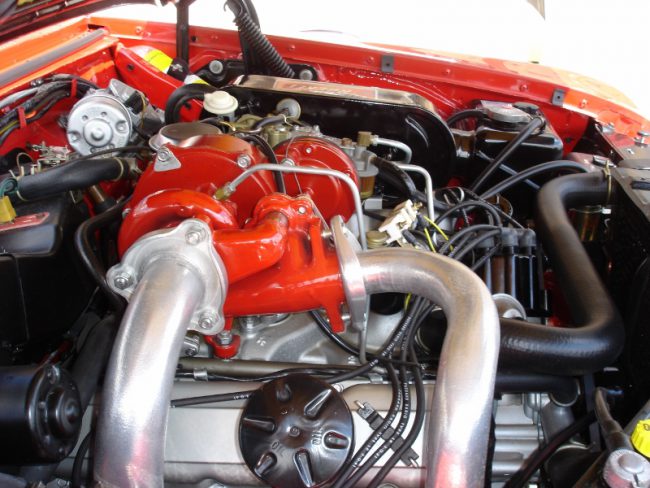
Other owners didn’t drive the car hard enough to generate boost (and thus lubricate the turbo’s compressor shaft), eventually leading to frozen turbocharger assemblies. The Turbo Rocket V-8 engine ran hot and experienced the same cooling issues as other Oldsmobile 215-cu.in. V-8s. Ultimately, however, the complexity of safety mechanisms tied to the fluid injection system helped seal the Jetfire’s fate.

Although based on the Cutlass coupe, the 1962 Jetfire was the only true hardtop in the F-85 line. Inside, it was pure Cutlass (with the exception of a standard console that featured the boost gauge).
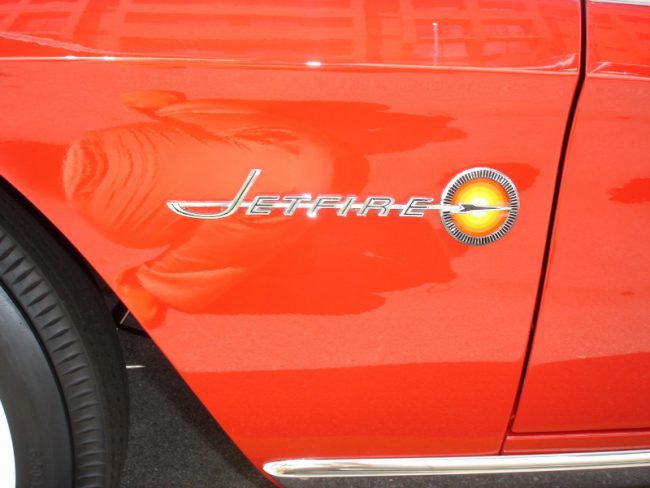
Jetfire exterior trim comprised an aluminum-inset side panel, dual chrome hood spears, and specific badging. A three-speed, column-shifted manual transmission was standard; for less than $200, buyers could choose either an optional four-speed manual or Hydra-Matic, both console-shifted. Also optional were power steering and power brakes, at $86 and $42.50, respectively.
Oddly, Oldsmobile made no significant alterations to the Jetfire’s suspension and chassis, which meant it handled like a regular Cutlass–which is to say, not terribly well. Standard rubber was 6.50 x 13, although 15-inch wheels were available at extra cost.

Like its Pontiac and Buick cousins, Jetfire grew for 1963: A restyling added four inches of length and two inches of width, and gave the Jetfire and its F-85 siblings a close family resemblance to the full-size 88s. Unfortunately, handling had not improved, and most contemporary reviews were less than kind.
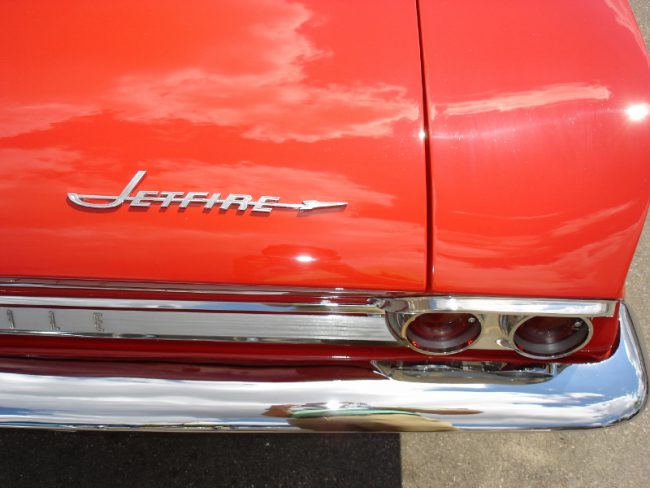
While 1963 would be the Jetfire’s final year, Oldsmobile did not abandon the idea of a high-performance intermediate. The following year saw the debut of a larger F-85 — now a true intermediate — that would spawn the muscular and legendary 4-4-2.
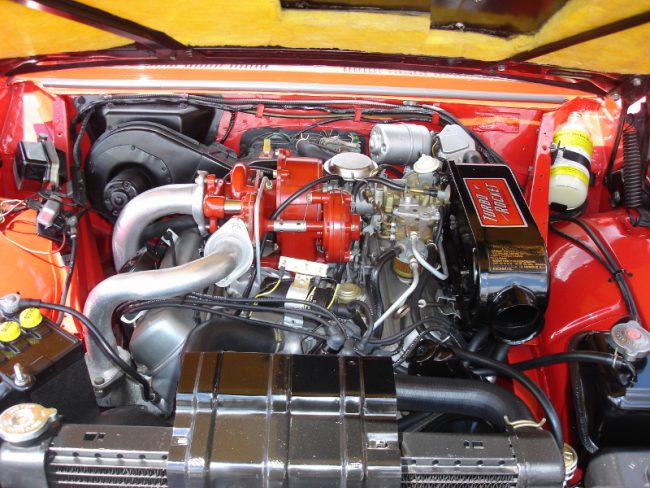
The Jetfire story, however, was not yet over. In 1965, in response to myriad problems, General Motors offered Jetfire owners a deal: At no charge to them, Oldsmobile dealers would remove the troublesome fluid-injected turbocharging system and replace it with a four-barrel carburetor and conventional intake and exhaust manifolds. Most owners jumped at this opportunity, making a Jetfire with its original Turbo Rocket V-8 and turbocharger assembly a unicorn among unicorns today.
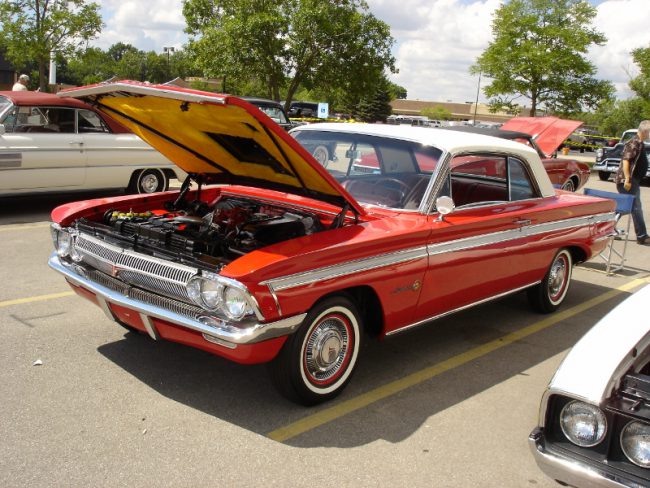
Like many visionaries, the 1962-63 Jetfire had the right idea too soon.


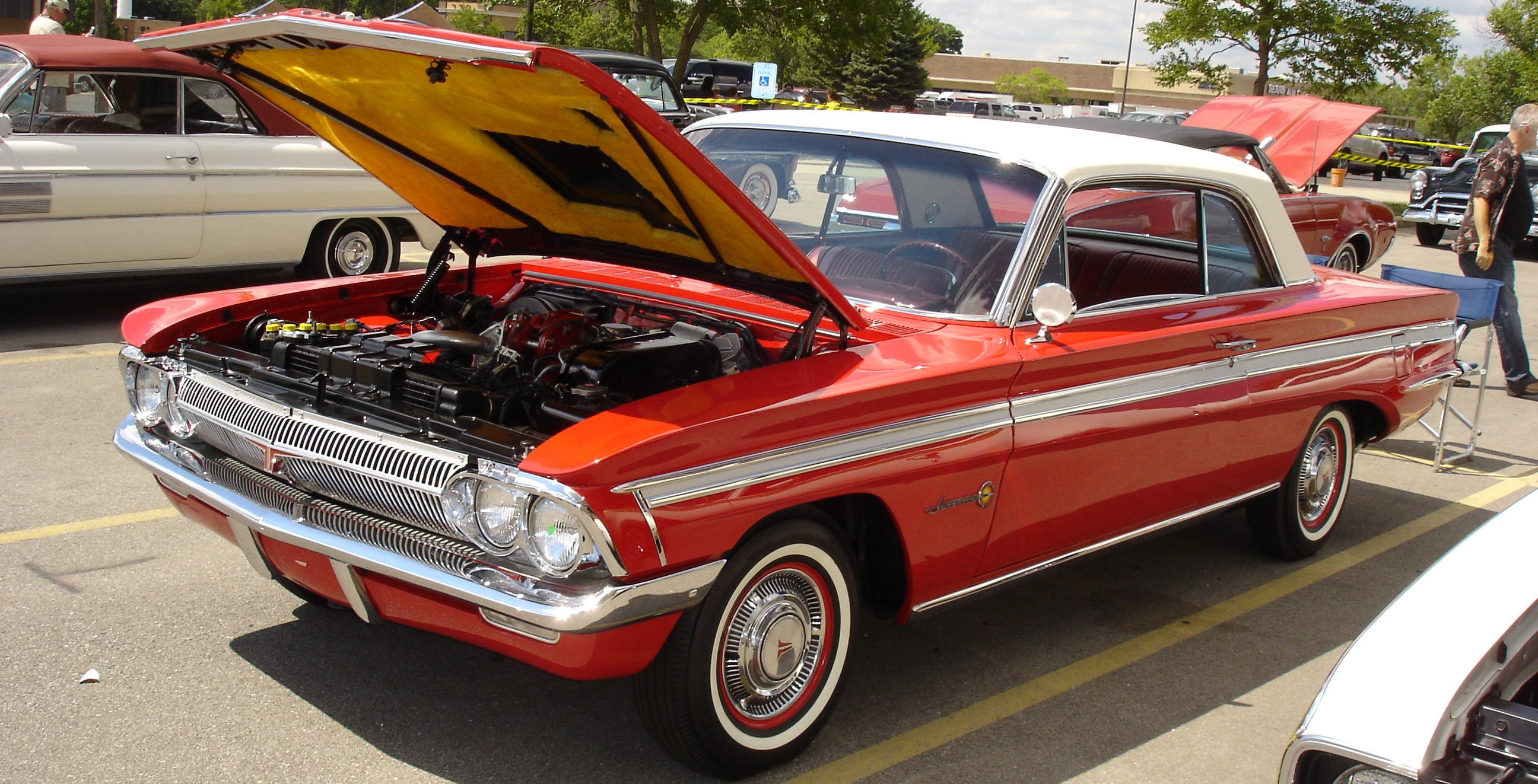
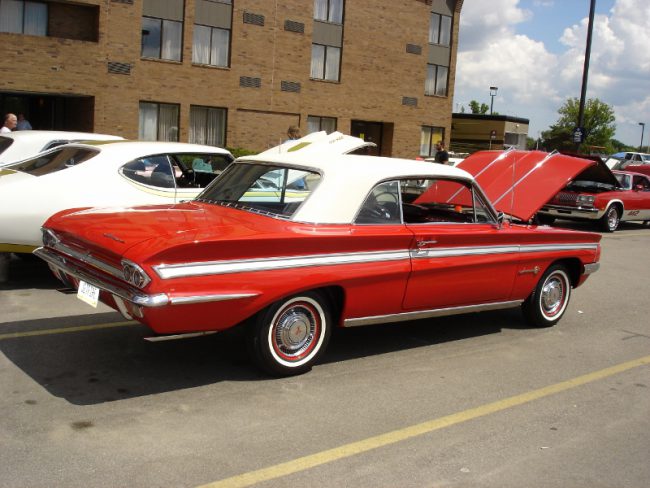




















9 Comments
1962: “Turbo Rocket Fluid”
2019: “DEF”
We were collectively smoking some waaaay better shit back in the 60’s.
Why would they raise the compression on a turbo engine?
In the early sixties in both England and the USA there was a class of up and coming college educated executives who wanted new, more sensible and innovative cars that still had some measure of the tradition of their fathers and grandfathers. Olds offered this and Rover offered the P6 2000. In both cases the small engine was probably not up for the weight of the car over the long term. So starting the tradition of lease specials. Olds fixed it by upsizing enough to use their more stout Olds V8 and Rover solved it by buying the aluminum 3.5 V8 from Buick where it did better in their lighter cars. In doing so, both expanded their potential market beyond early adopters. There is though something about the trim originals with all their innovation and achieving young buyers. Thanks Tom and Tony.
I always find it odd when an author has to take a dig on a cars handling when he has never driven one……
This guy does it twice? Bad handling? Compared to what? And declared by whom?
Otherwise its just gibberish dragging out the old standard and tired “American cars can handle durh durh duhur”
As an Old Man I find this car pleasing to the eye .
It looks like the Pontiac Tempest body ? .
Turbochargers are nifty, I have one in two of my old Mercedes W123 Diesels, they haul ass and don’t notice hills, giving good (for vintage vehicles) fuel economy whilst doing so .
-Nate
Turbo Rocket Fluid seems identical to MW50. That’s what the Germans used to inject into their aircraft engines to let them run at higher boost and keep up with allied aircraft performance late in the war.
There’s a guy on the YT that has a channel called Greg’s Airplanes and Autos. He has the best explanations of WW2 engine supercharging and turbocharging I’ve ever seen. Sorry to mention another site on here, please delete if that’s improper.
As long as you’re not linking WaPo or the NYT I have zero issue with it.
I run a meth/water injection system on my WRX. Remarkable cooling properties. My intake manifold gets down to 40 or 50 degrees below atmospheric. WAYYY below what it would be without the “boost juice.” It does run out quickly if you’re driving a little angrily. My reservoir is like 2.5 gal. I can get it to run longer if I drive like an old lady and keep the car completely out of the boost.
Regardless, beautiful old car. I love seeing classic stuff that does the same thing that my play car does.
I owned a 1962 Oldsmobile Jetfire. I bought it from my grandparents neighbor. He was the only owner before me. The car ran good and I had it for 5 years before selling it. The only odd part of the car was the “Jetfire Turbo Rocket liquid”. You had to keep the reservoir filled or you lost turbo boost. It had a Garret T-05 turbo if I remember correctly. When I bought the car the guy who I bought it from gave me 10 one Gallon jugs of this magical Turbo Rocket Fluid.